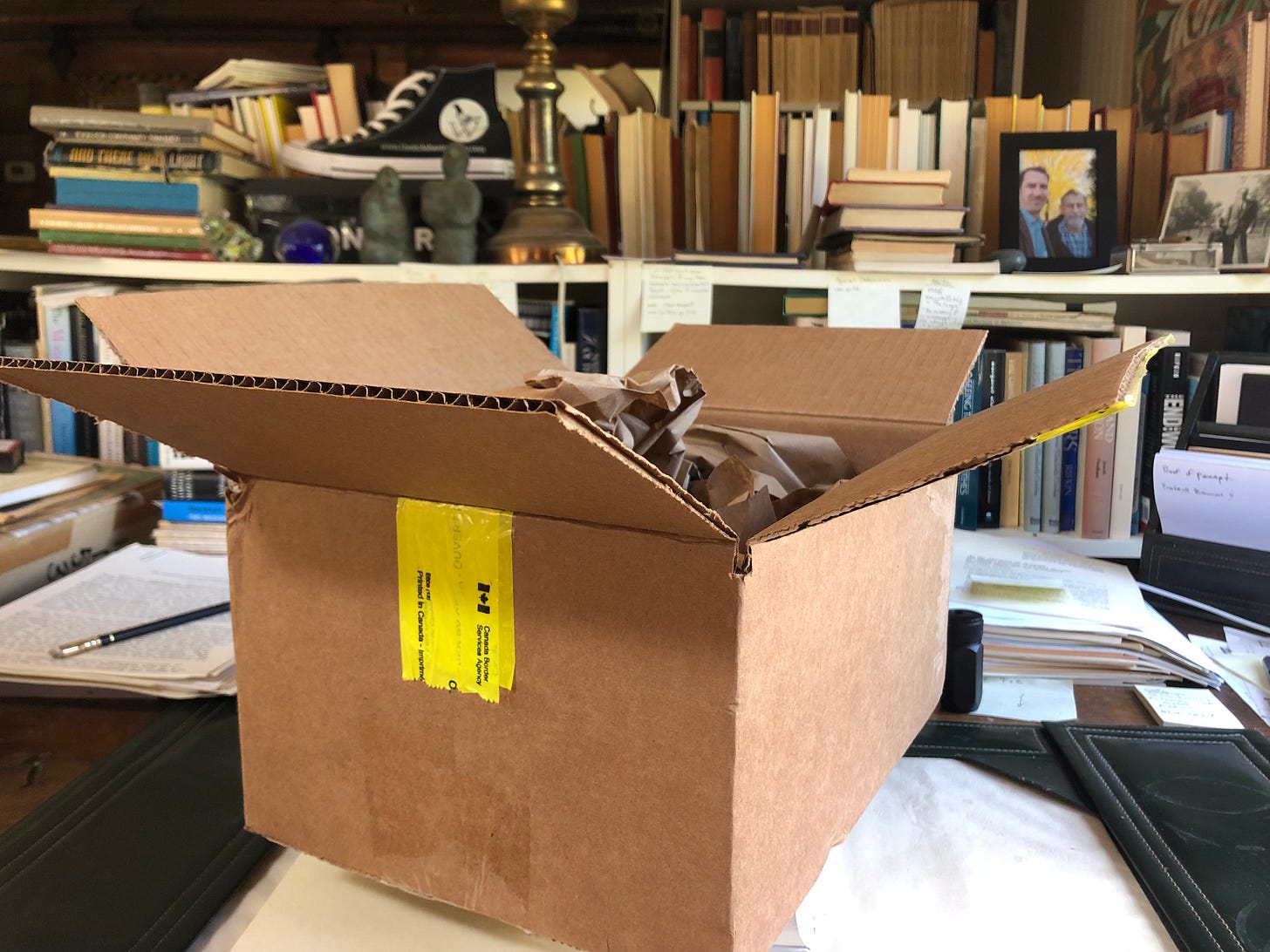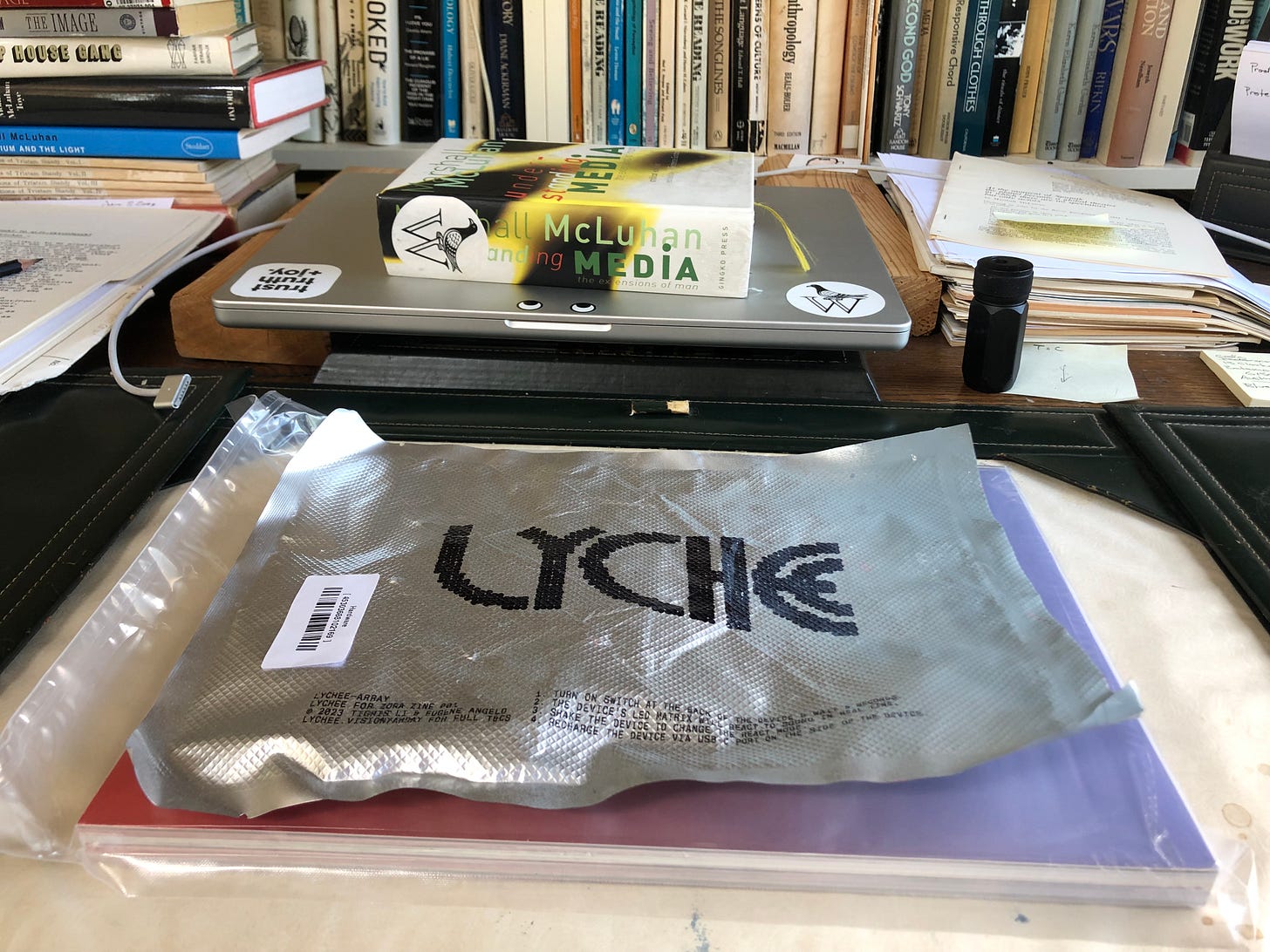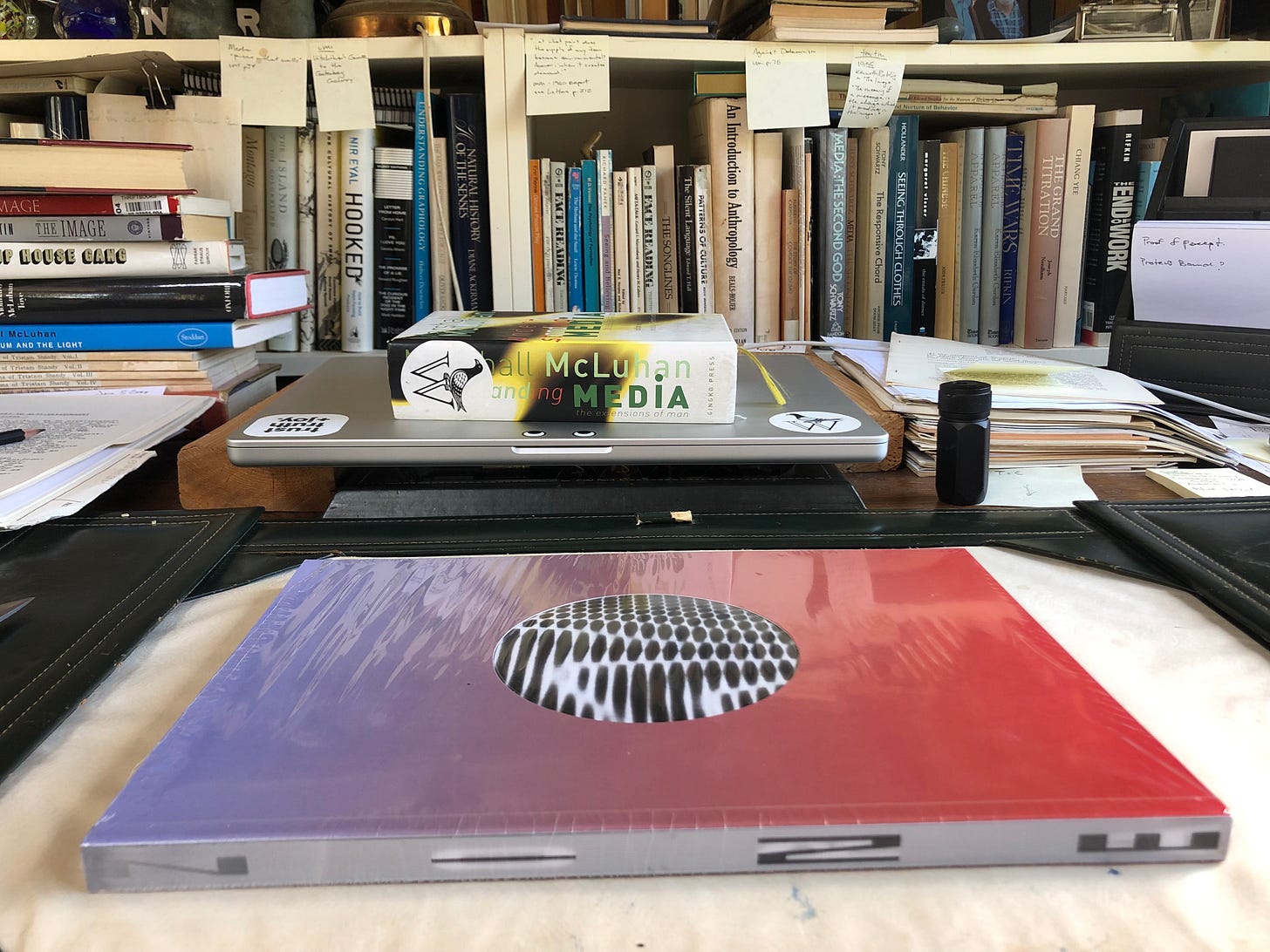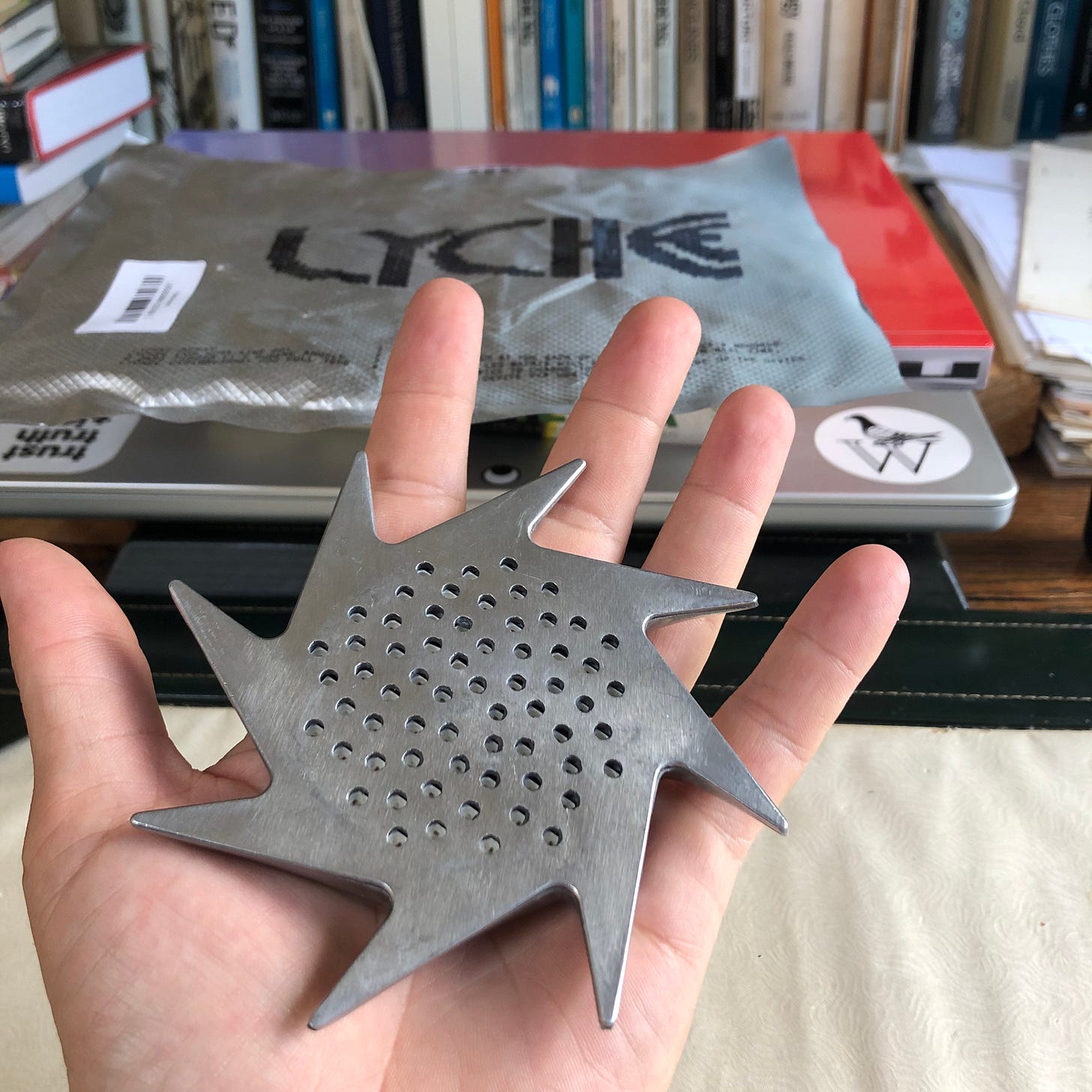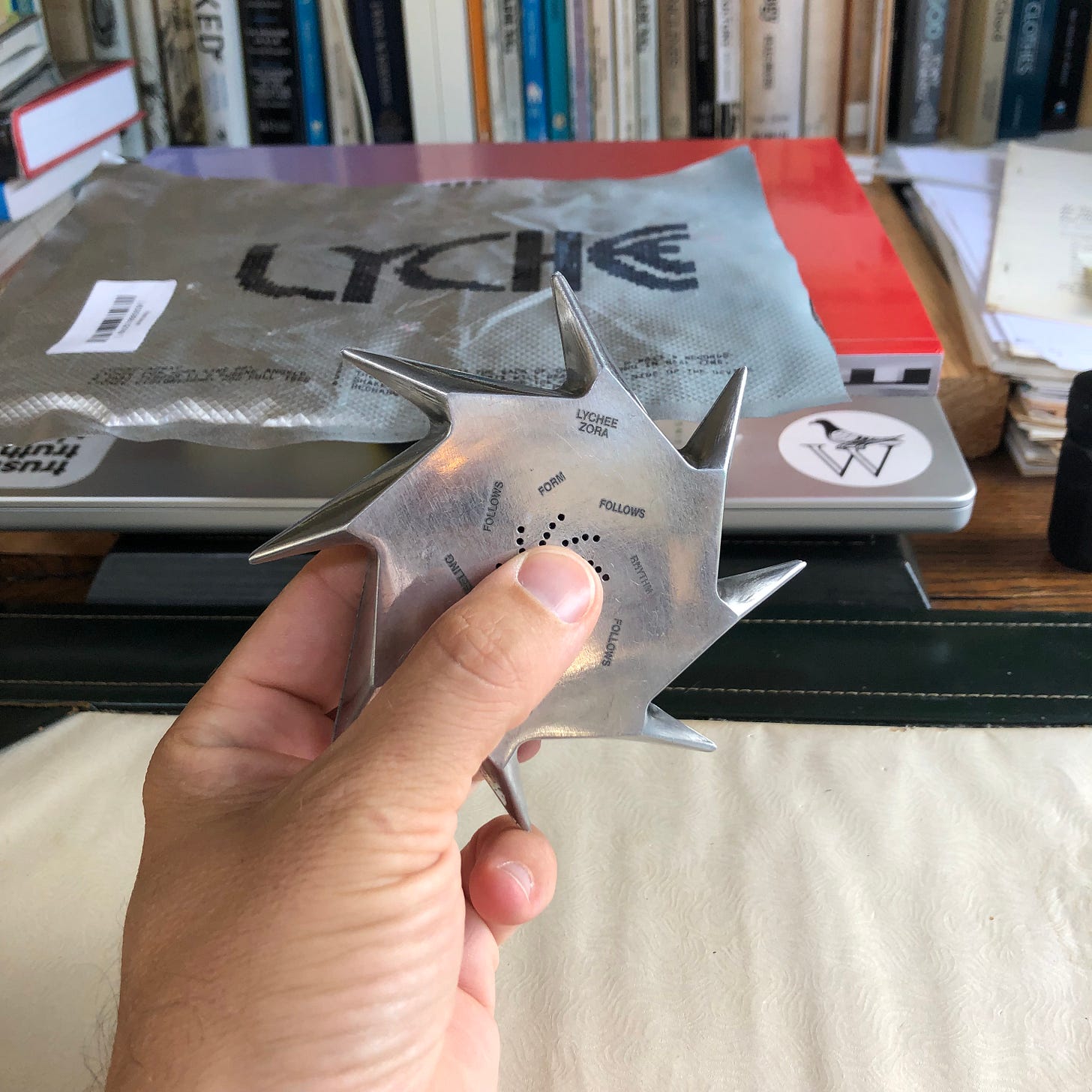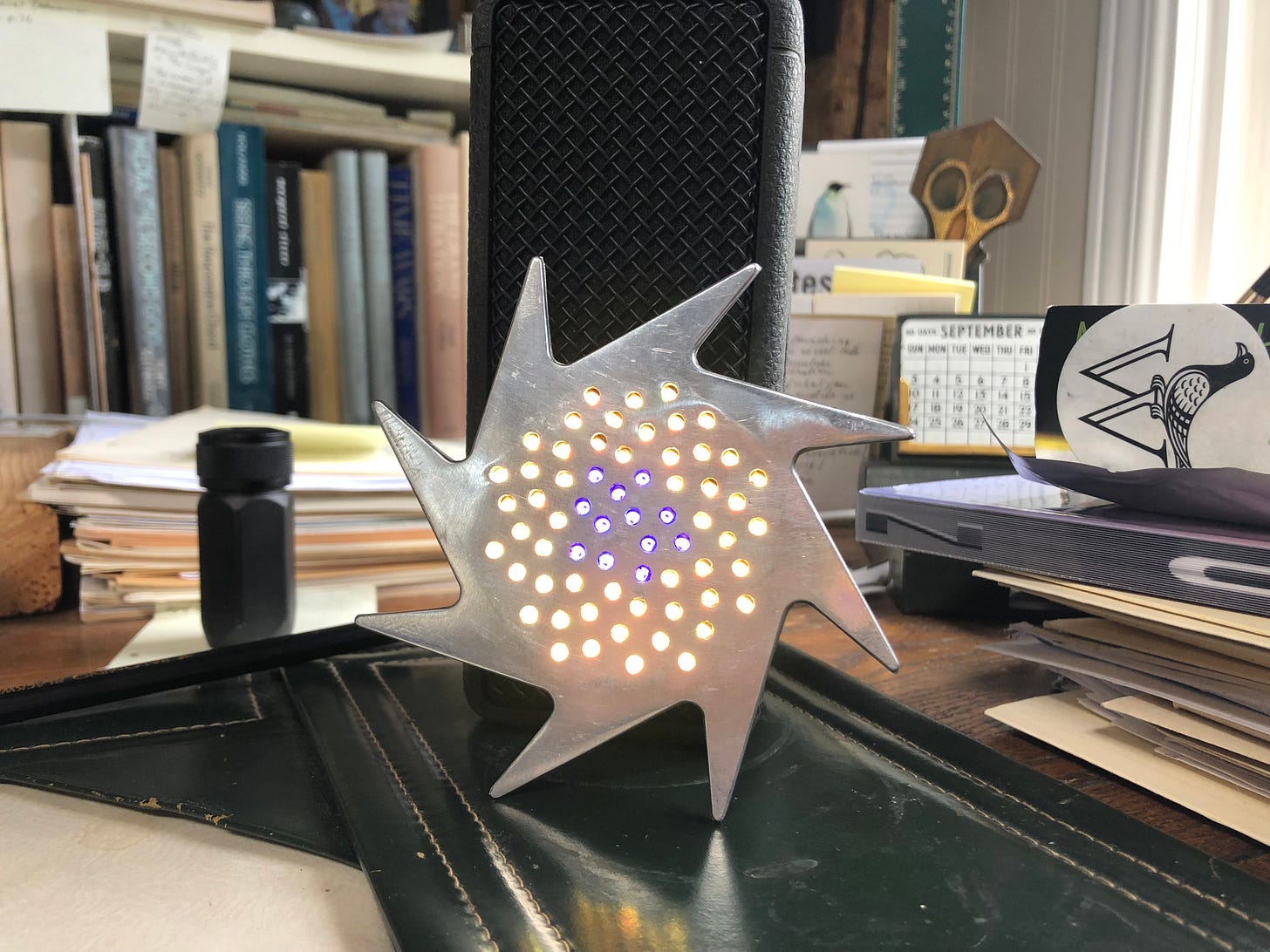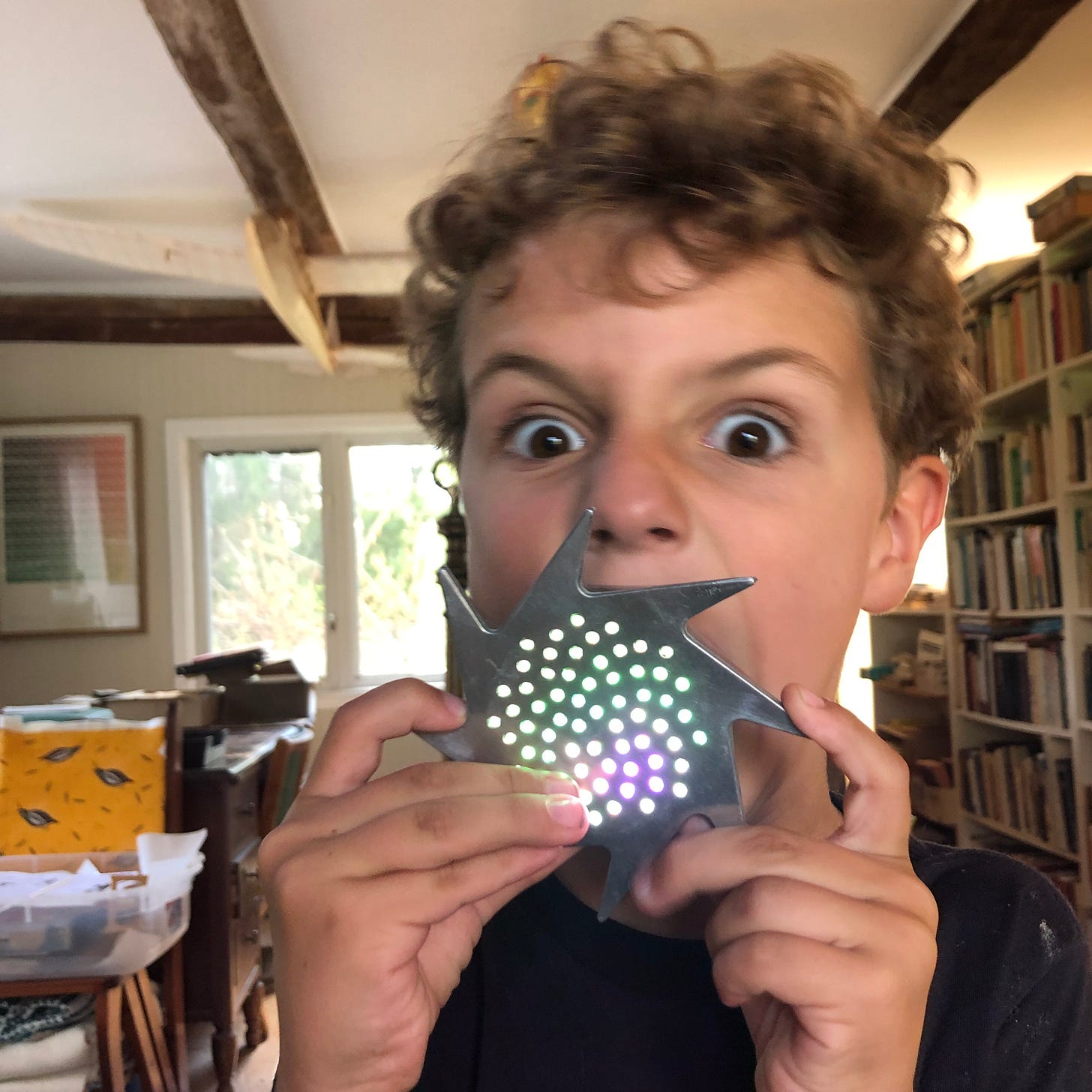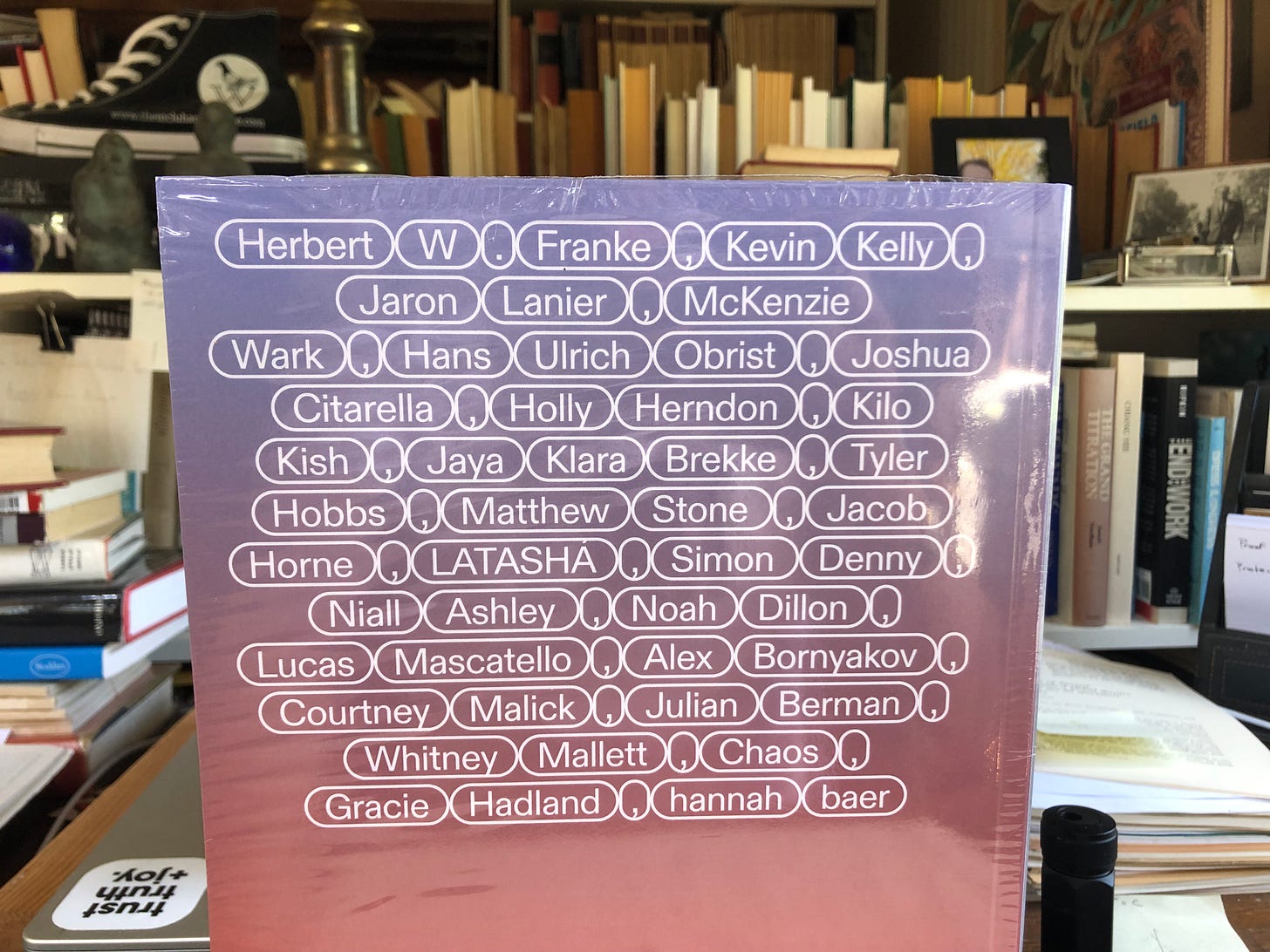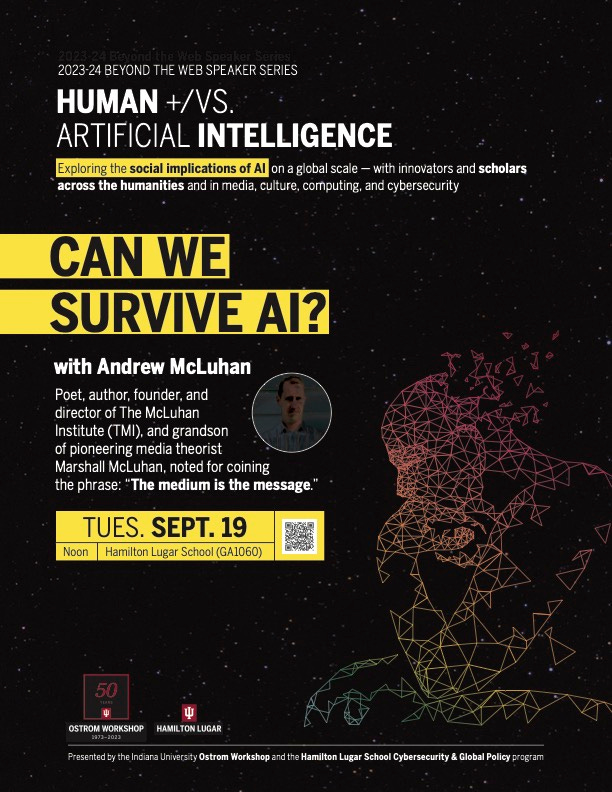REVIEW: What is Hardware
Recently, a package arrived in the mail, and I thought I’d try my hand at ‘a McLuhanesque product review.’
The following is a bit of an experiment, I hope you’ll forgive or indulge me, but either way come back again for something different next time.
Also: a summary of several upcoming topics/events follows this piece. —a.
>< : >< : ><
“Zine? What’s a zine?
“Like… a magazine.”
“Like for a rifle?!”
“No no no! Like, paper!”
That’s how the conversation went with the Canada Border Services Agency representative when I managed to speak with one on the telephone, after receiving a letter notifying me they were holding my (presumably suspicious) package at the border for proof of purchase which I can supply or they send it back.
She took exception to the package’s contents, listed as ‘Hardware’ and ‘Zine’
The actual contents resist conventional classification. Maybe this is what confused her. ‘Zine,’ which to me refers to a small, usually hand-crafted niche magazine, is actually a full size, glossy, full-colour magazine with contributions by a host of people, most of whom I don’t recognize but most of what I read was produced in the 20th century and earlier so that’s not a surprise.
‘Zora Zine’ (volume 1, issue 1), from your friendly New York City neighbourhood … What is Zora? This package is raising a lot of questions … has used funky lenticular printing to emblazon their name on the spine of the magazine. The cover has a large circular cutout exposing the title page. The back cover lists the authors. More cutouts inside serve to divide the essays/articles fake ads, illustrations, and highlight the contributions, their authors, illustrators. When I was thinking about doing a newsletter, I looked at physically printing it, and found it to be cost prohibitive – but I did enough research to recognize that this publication has spared no expense. It actually reminds me a little bit of Marshall McLuhan’s early (1968-1969) DEW-Line Newsletter, which featured increasingly complex design, and eventually fizzled out. I’m looking at ‘Zora Zine’ and the writer in me is like damn I wish I was in it.
Colourful. Glossy. Punchy. Provocative.
Cooler than me.
‘Zora Zine’ is really leaning into the analog and physical here, quite in contrast to their normal business which is internet/blockchain based.
Meanwhile, in stark contrast, I’ve got the Lychee device on (in the back it says ‘LYCHEE ARRAY’), resting on two tips against a portable speaker through which I’m streaming The Lot Radio, Brooklyn-based internet radio station, which I felt was appropriate as a test of the device. The package instructed:
1. TURN ON SWITCH AT THE BACK OF THE DEVICE & WAIT 5 SECONDS.
2. THE DEVICE’S LED MATRIX WILL REACT TO SOUND IN REAL TIME.
3. SHAKE THE DEVICE TO CHANGE THE REACT MODE.
(highly recommend shaking the device to change the react mode)
It’s about the size of the palm of my hand, aluminum, a half inch thick or so. The LED matrix glows a range of colours, swirling in patterns in reaction to the music, radiating, dancing.
If there’s one way I would modify the device it would be to add a way to wear it.
The back has the discreet on/off switch, and arrangement of perforations mirroring the exterior design, functioning to let the sound in. Words are stamped:
LYCHEE
ZORA
And around the centre,
FORM
FOLLOWS
RHYTM
FOLLOWS
TIME
FOLLOWS
FEELING
FOLLOWS
and around and around it goes.
The magazine is blurring the category as surely as the hardware is.
I don’t know what Zora is. I don’t know what Lychee is. I don’t know what a magazine is. I don’t know what hardware is.
For the sake of exploration and poetry, I am not sure what these things are. I also don’t particularly care because I have been delivered, I am having an experience, which while resisting known classification, maybe transcends classification and the need for it. It’s a great experience.
Today, I started my day leading an hour and a half long class and discussion around chapter four of Marshall McLuhan’s 1964 ‘Understanding Media: The Extensions of Man.’ That chapter is, as it happens, ‘The Gadget Lover: Narcissus as Narcosis.’ So far so good.
I went into town, got the mail – psyched that this package had been cleared by customs and arrived. I got a coffee. I dropped in the barber shop on the off-chance Andru would fit me in for a trim (yay, he did. I also accepted the offered hot towel and massage because I’m not crazy.) Came home, had a bite, cleared the pressingest emails and sat down to
OPEN THE BOX
And now I’ve got house music (or whatever the kids are calling it) boots and catsing, what looks like a hopped-up digital ninja star in freak mode, and browsing this interesting publication.
It’s a good day.
I’m not sure I’m the intended audience for this, but I’m loving it.
I’m loving that hardware can be fun, and it doesn’t have to be what it has been. It can be one imaginative person with access to tools, bits and pieces, and the ability to make stuff. We live in a time what the barriers to building hardware are quickly falling away, and this means a certain renaissance in the category.
I’m loving that this zine is the most un-zine-like thing I’ve ever seen. I’ll probably even read it cover to cover – up to this point, I’ve just flipped through kind of how I’ve thrown the ON switch on the Lychee device and let it rip. My kids are going to love that thing. Or, equally likely, be unimpressed after two minutes.
I’m loving that monopolies are crashing. That imagination and creativity can be expressed like never before. That people can build stuff because it would be awesome, and that it’s as feasible as graffiti used to be – grab your crew, some cans, and fuck up a train or wall and if the cops come, run. The barriers to entry for creating a fun piece of hardware or a magazine are reduced and reducing.
I’m loving that technology can not suck.
I’m hoping this isn’t one of one.
The kids wandered into my office and wanted to know what I was doing. I handed Virgil the Lychee Array and explained to him that sound goes in here, and lights come out here. He put it to his mouth and started yelling, a boy after an old punk-rocker’s heart.
(full disclosure: I asked Virgil (age 7) if I could use this photo, and he was reluctant. I said I wanted to use it for an article I’m writing and offered him $1. He thought about it for a second and countered with $5. I came back with $2 and he agreed. The kids will be alright.)
The kids WILL be alright.
The kids can start a digital art marketplace, and put together a full-on magazine (the most magaziney magazine I’ve seen in a while) stacked with impressive contributors, interesting visuals, executed perfectly.
The kids can imagine things that don’t exist, or improve things that do – do it better, do it themselves.
It’s never been easier for the kids to take and hold power and control and it’s never been harder for the establishment to hold onto it and this is a very welcome state of affairs.
Specs:
LYCHEE-ARRAY:
Tigris Li and Eugene Angelo
Zora Zine Vol. 01 Issue 01:
Head of Zine: Yana Sosnovskaya
Editor in Chief: Liam Casey
>< : >< : ><
About this REVIEW
A while back, I asked myself: what if Marshall McLuhan did product reviews?
Before Marshall McLuhan became well known as a media guy, he was well known as a literary critic. ‘The Interior Landscape: The Literary Criticism of Marshall McLuhan1943-1962’ (edited by Eugene McNamara, 1969) is a collection of his work in this area, and it’s great to read. Much of it is only superficially related to a particular book or author, more often waxing poetic on more familiar themes of culture and technology. I thought, what if he were to take the same approach to what we know as a ‘product review?’ What would that look like? Then I thought I’d try my hand at it so I put it out into the universe via Twitter, and this week something came in to my mailbox, by an appropriately, and comically, circuitous route.
Is the preceding the review that Marshall McLuhan would have given? Not so much. It’s my take, largely informed by my immersion these years in McLuhan work, and given that I’m a McLuhan, it’s a McLuhan review of a kind… as with all my appropriation of my family’s work, it has a certain spin to it. (May include a tiny bit of swearing… my Hunter S. Thompson appreciation is showing.)
With this review, with this kind of review, I have a particular object. Whereas I see the average product review as a fairly stale description and prescription (here’s what it is, you should buy it or not) I’m trying to look at aspects which might normally escape the average reviewer’s notice. I’m going to pay special attention to the ‘psychic and social’ effects of things, as anything McLuhan should. I’m going to lean on the poetic. I may or may not recommend buying something.
Disclosure: Eugene Angelo and Tigris Li are friends who do dope shit and I am predisposed to love their work because it’s consistently loveable. I also have friends at Zora, and have done some work with them, which doesn’t mean that I’ll automatically speak favourably, but I guess it’s bias.
>< : >< : ><
UPCOMING
Next week I am in Indiana to give a talk about AI. “Can we Survive AI is the intentionally-provocative title of my talk for the at the University of Indiana. For more information and to register, see the page at the University of Indiana Bloomington Media School.
>< : >< : ><
I’m starting to get ready also for an upcoming conference being organized around the centenary of the birth of Rene Girard. Novitate Conference: New Models of Thought and Desire is taking place at the Catholic University of America in Washington D.C., brainchild of noted Girardian Luke Burgis.
I have been invited to sit on a panel a the conference, and I’ll also be preparing a paper discussing McLuhan and Mimesis (less from a Girardian than a Havelockian or more properly a McLuhan use of the term).
This conference features a very broad and impressive list of people and I am very much looking forward to attending. I hope you will also.
>< : >< : ><
Slightly related, also not: I’m starting an honest-to-goodness radio show at local Prince Edward County radio station 99.3 CountyFM. Beginning October 15th, and following Sundays to infinity, I’ll be on at 8:00-9:00 PM ET, following the classical music program, with a new program: The Spoken Word. The title pretty much speaks for itself. Turn down the lights and tune in online if you care to spend an hour with me in celebration of the spoken word.
>< : >< : ><
Also, as this publication grows it evolves. It’s been wonderful having the audience grow these last months as I began publishing more and testing the waters. Soon, I will be unveiling a new title and identity, something which fits with the ethos I bring to The McLuhan Institute if a little bit different. I hope you’ll stick around for that.
>< : >< : ><
Finally, a note to readers and subscribers about this publication, because I’ve had more than one email on the subject.
This ‘newsletter’ is produced through Substack, which is a sort of distributor. It comes two ways: each ‘issue’ is sent to subscribers via email (and it maybe land in your junk or spam folders) and is also online: this is a link to the homepage. All posts are archived there.
About ‘subscription:’
Many publications ‘paywall’ posts to get people to pay for content. I don’t do that. If you pay for a subscription or subscribe without paying, you get the same access.
I do my best to provide equal access to McLuhan work because I believe in accessibility.
However, I have big dreams for what The McLuhan Institute could be, even should be, and that’s going to take a lot of money. At the moment, I am funding my work here mainly through my work teaching, writing, and consulting. I get some support through Patreon patrons, and some here. Otherwise, it’s me. No public or private institution so far has come knocking or answered my calls. The Patreon and Substack income, combined, don’t add up to much more than keeping the lights on through the year, and though I’m grateful for that much, it’s not enough to start to build the next phase of The McLuhan Institute (which would allow me to dedicate more time to research and publishing and tying up the many loose McLuhan ends, and to enhance the facilities here to allow me to open the doors to the public for visits and residencies and events.)
Where I was going with all that:
Yes, you can get this ‘newsletter’ completely free. I’m glad if you do.
You can also switch to a paid subscription if you believe in the work I am doing, want to help expand that work further because the world needs it more than ever.
Either way I’m going to carry on, but I’d love to do more.
Thanks for being here,
Andrew




